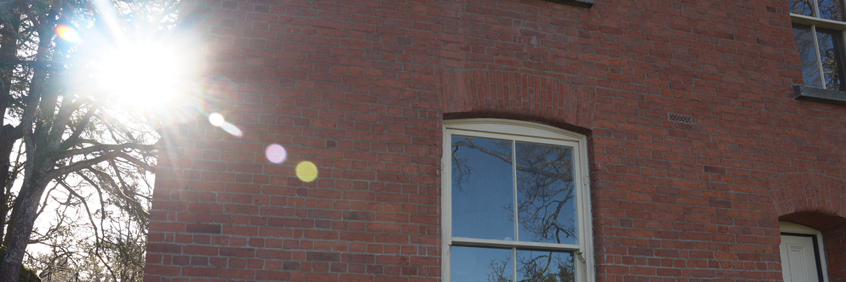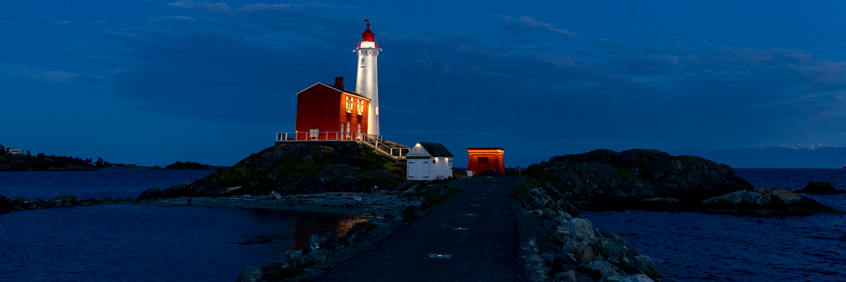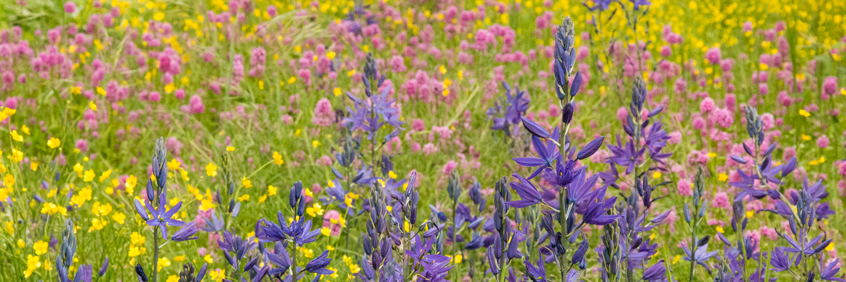Parks Canada's infrastructure program
Fort Rodd Hill and Fisgard Lighthouse National Historic Sites
Giving our past a future. Fort Rodd Hill.
Transcript
[Music][Parks Canada logo]
Drone shot of Fort Rodd Hill and Fisgard Lighthouse looking toward the shore from the water
"Animated text: Fort Rodd Hill and Fisgard Lighthouse National Historic Site Restoration Giving Our Past a Future
"Animated text: Vancouver Island, British Columbia
<
Historic structure at Fort Rodd Hill
Animated text: The fort was built in the 1890s to protect Vancouver Island's Esquimalt Naval Base.
[Old black and white photo of a military structure at Fort Rodd Hill]
Animated text: It was later used during WWI and WWII as part of Canada's coastal defense system.
[Old black and white photo of soldier leaning on an artillery feature at Fort Rodd Hill]
Animated text: After over 100 years, many of the concrete structures were starting to degrade.
#REF!We are in a very damp and very salty environment here on the west coast of
[Historic concrete structure at Fort Rodd Hill with sun shining through light raindrops]
Canada
[Birds waddling along oceanfront pebbled beach]
and this leads to very rapid degradation
"Animated text: Kate Humble Historian and Curator, Fort Rodd Hill and Fisgard Lighthouse National Historic Site
" "of building materials. So, keeping up with" the maintenance work here has always
[Construction worker on ladder repairing fort wall]
been a challenge.
[Machines and construction equipment scattered around Fort Rodd Hill Historic Site]
Animated text: In 2015, the Government of Canada invested $10 million dollars to restore the buildings at Fort Rodd Hill and Fisgard Lighthouse
[Map of Fort Rodd Hill and Fisgard Lighthouse National Historic Site highlighting the site's Upper Battery building]
"[Animated text: The Upper Battery Built in 1895]
"[Kate standing in Upper Battery]
So, you can see right now we're standing in a lovely dry environment; it's actually pretty
["Before" footage of Upper Battery showcasing disrepair]
#REF! But if you had been here a couple of years ago, before the restoration work was done, this would have been wet—I mean we had #REF! sheeting down the sides of the building. Some of the brick brickwork in the ceiling was coming loose from all the moisture and condensation.[Drone shots of entire historic site, mid-construction]
So the restoration work essentially " peeled back the 15 feet of soil that is" on top of this magazine right now... they installed a waterproof membrane #REF! and they put all that soil back onto it...
[Shots of historic site, post-construction]
they reseeded it with native grass seed and now today, even in the middle of the winter and even on a rainy day, it is nice and dry and very
[Dry magazine with fresh coat of paint, post-construction]
#REF! [Music][Map of Fort Rodd Hill and Fisgard Lighthouse National Historic Site with Searchlight highlighted]
"Animated text: The Hidden Searchlight Built in 1940
"[Small, orange building on the beach with animated rotating white circle around it]
[Details of small, red building on beach with wooden boat on the front]
will see on the beach is what appears to be a kind of beaten up, #REF! it's actually made of metal not made of wood and there are
[Shot from inside the searchlight of doors opening to reveal waterfront]
[Large antique searchlight]
rolling sliding doors at the front, which will roll open and expose an enormous diesel-powered electric searchlight. They've replicated
[Detail shots of the searchlight's metal siding, painted to look like wood]
running vertical planks of wood, they've replicated the knot holes in the wood, they've even replicated the wooden roof of a boathouse.
[Kate inside building speaking to camera]
So, when you go down today the restoration work has been wonderful; they restored some of the concrete around the base, they cleaned up all of the metal, they repainted it,
[Old black and white photo of searchlight]
[Modern image of lighthouse taken from same angle]
and, of course, they repainted it with that original camouflage that was put
#REF! so enemy ships wouldn't recognize that it was actually a searchlight.[Map of Fort Rodd Hill and Fisgard Lighthouse National Historic Site with Warrant Officer's Quarters highlighted]
"Animated text: Warrant Officer's Quarters Built in 1897
"Animated text: These quarters house the families of Warrant Officers, who managed the Fort between wartimes.
Animated text: The most famous family to live here, the Buxtons, raised 14 children in the two-bedroom home.
[Old black and white photos of the Buxton family in front of Warrant Officer's Quarters]
[Music] So as part of the restoration work over the last few years the Warrant Officer's #REF! and attention. For starters,
[Photos of Warrant Officer's Quarters highlighting construction details]
the slate shingle roof has been replaced, we also had a lot of the exterior brickwork
#REF! were big gaps between the bricks which leads to water ingress into the bricks[Kate speaking in front of repaired brick wall]
themselves, which means that each brick was starting to decay and pieces of
[Detail shots of Warrant Officer's Quarters brickwork, post-construction]
brick were falling out. So the work that was done here was done beautifully, very meticulously, and has really saved the outer shell of this
#REF! [Music]Animated text: During the restoration, Parks Canada discovered evidence of life beyond the military operations.
"I find this site really fascinating
"[Drone shot of Fort Rodd Hill and Fisgard Lighthouse National Historic site from land overlooking the ocean]
because when you come here you think, "okay, that's an 1890s military fort".
[Green decommissioned artillery overlooking water with Fisgard Lighthouse in background]
But the untold story of the place is the family life.
[Forested greenery spanning Fort Rodd Hill's grounds]
One of the big upgrades that was done here was restoration on what is underneath the ground, including water works and sewage works and some electrical lines.
[Photos detailing repairs that happened beneath the ground]
#REF! and you could see part of their lives emerging from the soil where they must have played... things like little teeny glass dolls[Glass doll eye artifact on display]
eyes; we had the remnants of children's tea
[Rusted old teacup]
"sets, even." That's the stuff you're not expecting.
[Drone shot of concrete structures at Fort Rodd Hill National Historic Site]
Fort Rodd Hill and Fisgard Lighthouse is a place where kids can run around, where
[Cement doorway with the year "1895" carved above the door]
[Child and grandmother looking over the water, enjoying Fort Rodd Hill and Fisgard Lighthouse National Historic Sites together]
#REF! things, where you can open up the doors. You're getting in contact with the physical materiality of our story.Animated text: Protecting this historic site gives our past a future so we can continue to share it with future generations.
Animated text: To learn more about the restoration work at Fort Rodd Hill and Fisgard Lighthouse, visit www.pc.gc.ca/en/lhn-nhs/bc/fortroddhill/visit/visit5
Animated text: Or come see the newly-restored site for yourself. (We haven't lookd this good in over 100 years!)
Credits:
"[Parks Canada logo Like. Comment. Share. PC.GC.CA social media logos]
"We haven’t looked this good in 100 years!
In 2015, the Government of Canada issued Fort Rodd Hill and Fisgard Lighthouse National Historic Sites 10 million dollars as part of the Government of Canada’s federal infrastructure investment plan.
Protecting the important buildings of these national historic sites gives our past a future, so that we may continue to share our stories with generations to come.
Projects at Fort Rodd Hill and Fisgard Lighthouse National Historic Sites
Fort Rodd Hill Restorations
Over the past five years, Parks Canada has restored Fort Rodd Hill, and we can’t wait for you to come and explore the site in its pristine condition.
Fort Rodd Hill is one of the only intact 19th century coastal military fortifications left in Canada. It was built in the 1890’s to protect Vancouver Island’s Esquimalt Military Base, and later used during World War One and World War Two as part of Canada’s Coastal Defense System.
After over 100 years of exposure to the marine environment, Fort Rodd Hill’s concrete walls and buildings were at risk of becoming unsafe and permanently lost.
Some of the restoration highlights include:
The Upper Battery

- The Upper Battery Magazine, originally built into the earth in the 1890s to store ammunition, was suffering from nearly 125 years of moisture due to our damp and salty climate. In 2017, our infrastructure team worked hard to install a water resistant barrier beneath the soil on top of the magazine to help control the interior climate and preserve it for another 125 years.
- Our restoration team repaired the crumbling, cracking concrete of the Upper Battery Guardhouse and defensible walls. When you examine these renovated structures, you will see that we purposely kept the ‘scars’ of these repairs visible. This restoration work is now part of the stories these walls will tell to future generations.
- Our infrastructure team performed a heritage restoration of the Electric Searchlight Directing Station to keep it safe and solid for another century.
The Hidden Searchlight

- Originally built in 1940, this “fisherman’s hut” hid one of the 17 searchlights located throughout the fortress. When approaching the site from the beach, you will see what appears to be an old, red wooden boat house. However, this building is actually made of metal. Rolling sliding doors open up to reveal the hidden searchlight. This was restored it to its wartime camouflage scheme.
The Warrant Officer’s Quarters

- Extensive work was done to restore the exterior of the Warrant Officer’s Quarters, including replacement of the slate shingle roof and repointing of exterior brickwork, which was starting to crumble and all apart.
Exterior lighting at Fort Rodd Hill and Fisgard Lighthouse

An exterior lighting system has been installed, which highlights the spectacular features of the fort and lighthouse at night, and improves safety for visitors staying overnight in the oTENTiks.
Garry oak ecosystems species at risk recovery

A visit to Fort Rodd Hill and Fisgard Lighthouse national historic sites is not only an opportunity to take a step back in time and learn about our military and coastal navigation history, but it is also an immersion into one of Canada's rarest habitats: a Garry oak ecosystem. Visit the Garry Oak Learning Meadow, a garden bursting with native plants, and witness the vibrancy of this restored habitat. Ask for a copy of the Garry Oak Gardener's Handbook and let it guide you to the satisfying practice of naturescaping your green space with low maintenance native plants. Two new self-guided interpretive trails await, allowing you to explore Fort Rodd Hill's natural spaces and get interesting insights into the history of the land and its people.
Related links
- Date modified :